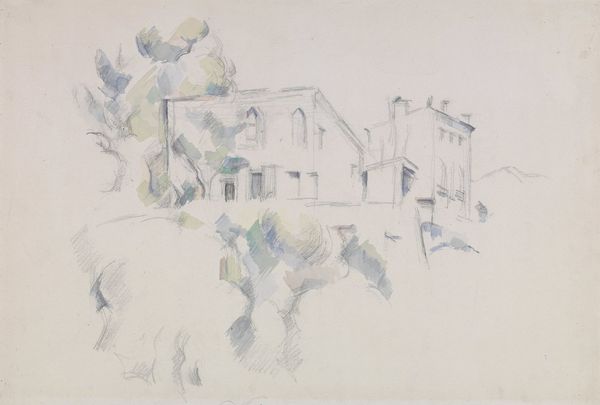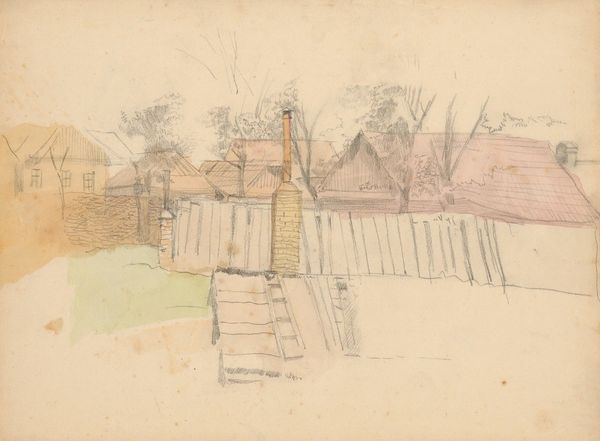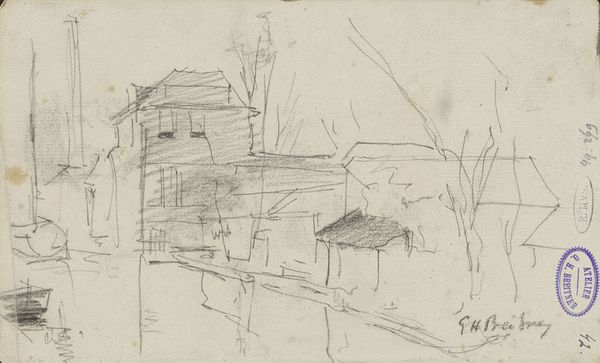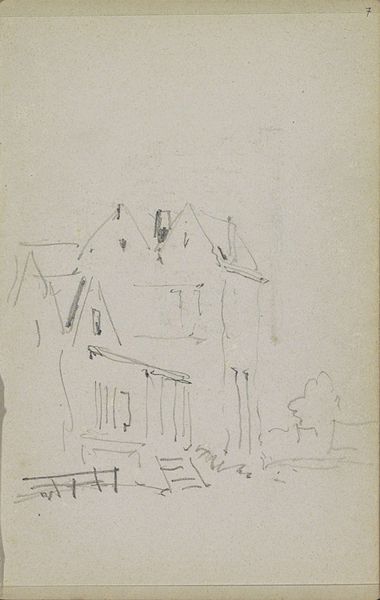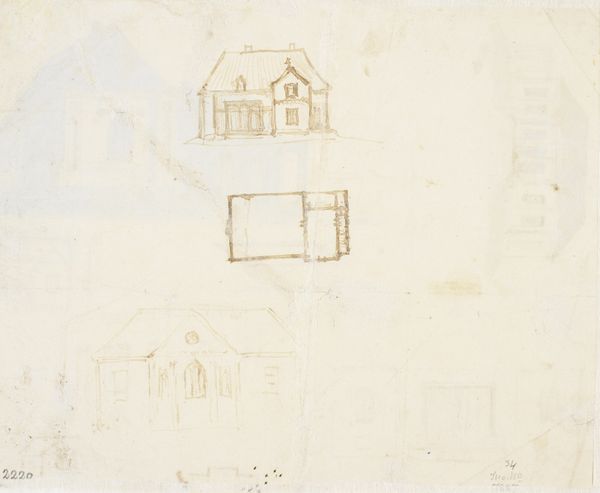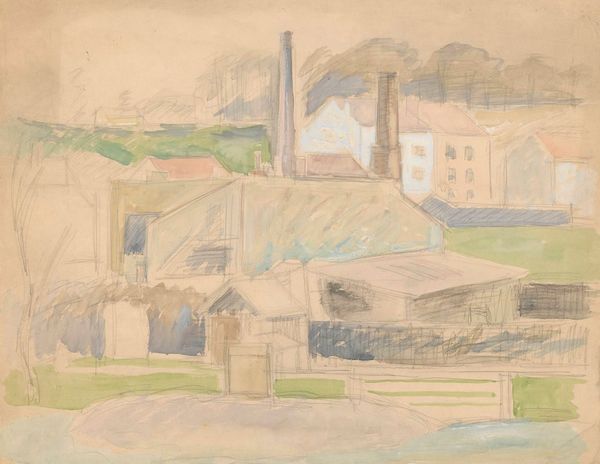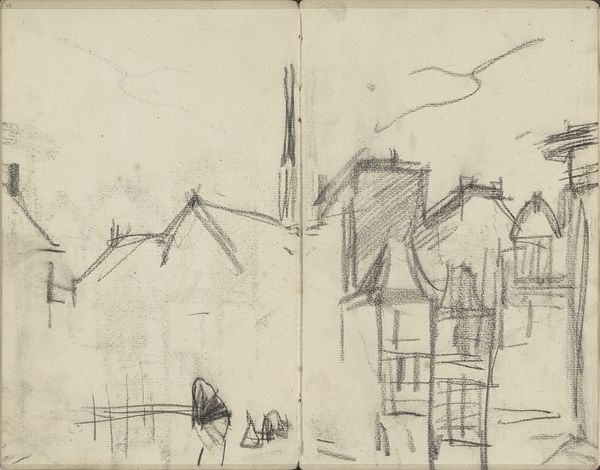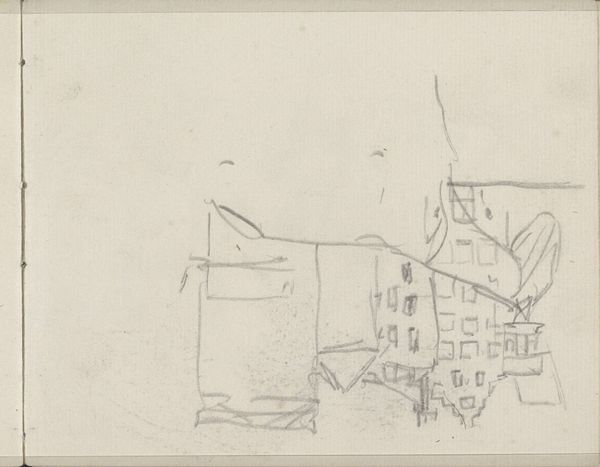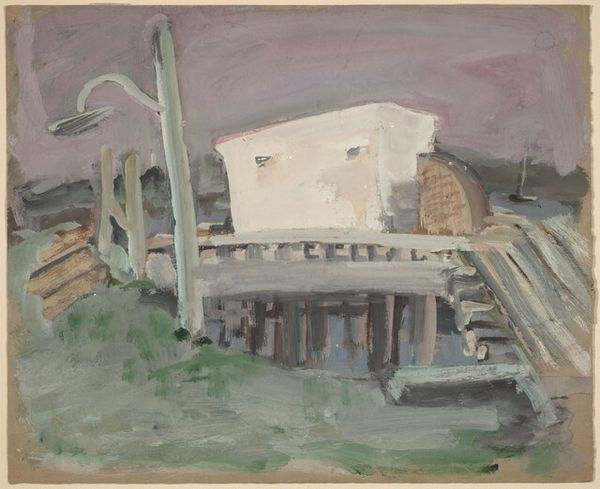
Copyright: Public Domain: Artvee
Curator: This is "Sketch of Buildings," a watercolor work by Zygmunt Waliszewski, created sometime between 1930 and 1935. Editor: There’s something haunting about this sketch. It’s so translucent and spare, almost as if the building is fading, or was never really there to begin with. It really has a ghostly, ephemeral feel to it. Curator: Waliszewski, during this period, was deeply embedded in artistic circles that valued experimentation. The way he uses watercolor here—almost like a preliminary gesture—certainly challenges traditional notions of finish and presentation in art. It's less about depicting a concrete structure and more about capturing an essence. Editor: Exactly, and the architectural symbolism contributes to this. Buildings often represent stability, permanence. But here, the wispy lines and washed-out tones give it such a sense of impermanence, like a memory. The windows in particular have a subtle weight and meaning in that sense. Curator: Interesting point. Considering the interwar period and the build-up to the Second World War, we can perhaps view this 'sketch' as a metaphor. The fragility of peace, the impermanence of societal structures... Buildings are bombed or burned down in war, the solidity, as you say, of society fades away with a loss of cultural memory. Editor: That reading absolutely resonates. The use of watercolor only reinforces it further, a medium known for its fluidity, blending and, in some cases, transience. It captures something of the melancholic feeling of that period. Curator: Moreover, think about how the art world, in its institutional structures and art movements, might value these impressions or fragments as testaments to this tension. It seems appropriate this isn’t some grand statement of art and design, but this more subdued watercolor, with less formality, feels intimate and questioning. Editor: I'm drawn to the subtle emotional resonance—like gazing at a half-remembered place from your childhood, the joy but with this profound sadness of inevitable change and loss. Curator: I think you've illuminated aspects of it very clearly; thank you. Seeing how visual imagery of architecture functions on social, cultural, and institutional levels gives it real clarity in terms of time and space. Editor: Likewise, understanding that cultural continuity through visual language is enriching when attempting to place meaning with memory and history.
Comments
No comments
Be the first to comment and join the conversation on the ultimate creative platform.
